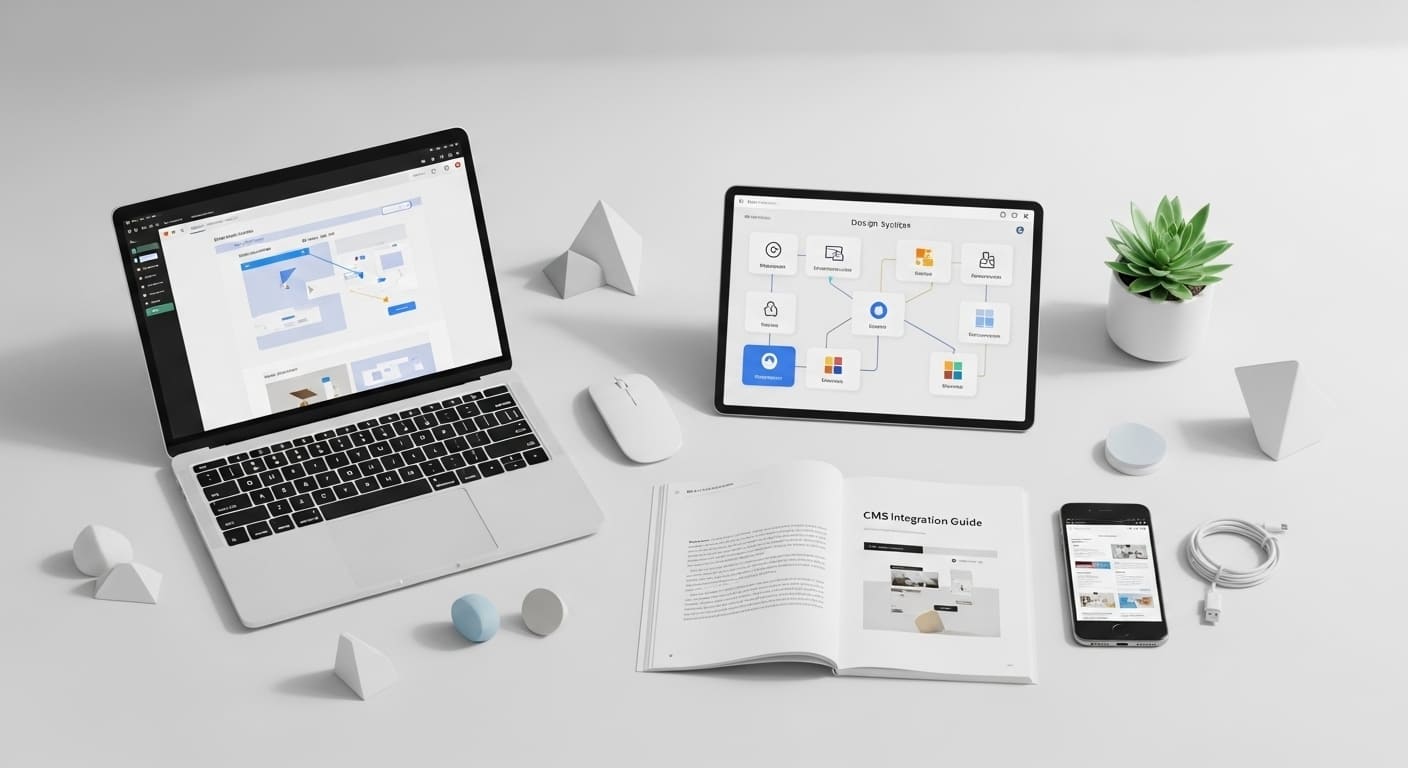Are you struggling to deliver a seamless customer experience across multiple channels? If so, you’re not alone. In today’s fast-paced market, customers expect smooth interactions whether they’re buying, seeking support, or engaging with your brand. That’s where building omnichannel Salesforce experiences become a game-changer. In this post, you’ll learn how leveraging Salesforce’s omnichannel capabilities can revolutionize your sales and support efforts, making your service cloud smarter and more responsive.
Understanding Salesforce Sales Capabilities
Salesforce Sales Cloud is an industry-leading platform designed to streamline the sales process, and its omnichannel Salesforce features have taken this to a whole new level. Integrating multiple communication and engagement channels into a single system enables sales teams to respond swiftly and accurately—regardless of how customers prefer to connect.
Overview of Salesforce Sales Cloud Features that Support Omnichannel Sales
Sales Cloud offers a comprehensive suite of tools tailored to an omnichannel environment:
- Lead and Opportunity Management: Capture and nurture leads from email, phone, web chat, and social media all in one unified dashboard.
- Customer Segmentation: Use AI-powered analytics like Salesforce Einstein to segment customers based on behavior, preferences, and engagement history.
- Real-Time Interaction Tracking: Monitor customer interactions across channels in real-time, enabling timely and personalized follow-ups.
Together, these features ensure your sales pipeline remains active and adaptive, minimizing the chances of missed opportunities.
How Omnichannel Approaches Increase Conversion Rates and Customer Engagement
By embracing an omnichannel strategy within Salesforce, sales teams can increase both engagement and conversion rates:
- Consistent Messaging: Customers receive the same experience whether through email, chat, or phone, reinforcing trust.
- Instant Access to Data: Real-time visibility into customer touchpoints enables reps to tailor conversations dynamically.
- Seamless Channel Switching: Customers can switch from chat to a phone call without repeating information—removing friction from the buying journey.
Reports from recent 2025 Salesforce users highlight up to a 30% lift in conversion rates when omnichannel capabilities are fully leveraged.
Examples of Integrating Multiple Sales Channels Seamlessly
A practical example could be a retail business using Salesforce:
- A customer initiates a product inquiry via live chat.
- The chat agent escalates the message to a phone call without losing the conversation history.
- The sales rep accesses the customer’s previous purchases and preferences directly in Sales Cloud and makes a personalized offer.
Such seamless transitions across phone, chat, and email create a true omnichannel sales environment, where every interaction is contextual and efficient.
Leveraging Omnichannel Support in Service Cloud
The Salesforce Service Cloud is the backbone for delivering consistent, high-quality customer support, especially when employing omnichannel strategies.
Role of Service Cloud in Centralizing Customer Support Requests
Service Cloud consolidates support tickets from every customer touchpoint—email, phone, live chat, social media, and self-service portals—into a single, centralized interface. This holistic view empowers support agents to:
- Instantly recognize the customer’s history and current issue.
- Avoid redundant questions by having all prior interactions at their fingertips.
- Access service scripts and knowledge bases tailored to the issue type.
This centralized management helps businesses deliver cohesive support experiences even as customer expectations for speed and accuracy rise.
Tools Within Service Cloud for Routing, Prioritizing, and Resolving Issues
Leveraging advanced routing algorithms and AI tools like Einstein Bots, Service Cloud automates:
- Issue Routing: Assigns customer requests to the most qualified agent based on expertise, availability, and workload.
- Prioritization: Classifies tickets by urgency, customer value, or SLA obligations, ensuring critical issues get immediate attention.
- Issue Resolution: Suggests solutions, related articles, and next-best actions to agents in real time.
Together, these tools reduce response times and increase first-contact resolution rates, key metrics for customer satisfaction.
Benefits of Omnichannel Support: Faster Response Times and Higher Customer Satisfaction
Implementing an omnichannel Service Cloud strategy leads to tangible business benefits:
- Customers receive timely support, whether they reach out by social media or phone.
- Agents have complete context, minimizing frustration and enhancing service quality.
- Businesses see measurable improvements in CSAT and Net Promoter Score (NPS).
In 2025, companies combining omnichannel support with AI insights report up to a 40% reduction in average response time, directly boosting loyalty and retention.
Integrating Sales and Support for Unified Customer Experiences
The real power of omnichannel Salesforce experiences emerges when sales and support systems are deeply integrated.
How Linking Sales and Support Data Improves Customer Insights
When Sales Cloud and Service Cloud share data seamlessly, teams gain a 360-degree view of the customer journey. This unified insight can:
- Reveal pain points that negatively impact purchase decisions.
- Highlight upsell and cross-sell opportunities based on support interactions.
- Enable predictive analytics to anticipate customer needs or risk factors.
Data-driven decision-making becomes more precise, allowing businesses to craft tailored strategies for each customer segment.
Use Cases Showing Shared Dashboards and Collaborative Workflows
Consider a subscription-based software company:
- Support agents flag recurring product issues that cause churn, updating sales teams instantly.
- Sales reps use this information to adjust contracts or offer incentives proactively.
- A shared dashboard highlights customer health scores combining sales and service metrics.
By fostering collaboration through shared tools, businesses break down silos, driving revenue growth and customer satisfaction simultaneously.
Impact on Customer Retention and Loyalty
Unified omnichannel Salesforce approaches improve retention by creating more personalized, responsive experiences. Customers feel valued when their past interactions inform every new engagement—whether making a purchase or solving an issue.
According to 2025 industry benchmarks, companies with integrated sales and support report a 25% higher customer retention rate than those with siloed systems.
Advanced Omnichannel Salesforce Trends and Best Practices
Building on foundational omnichannel strategies, businesses can adopt advanced techniques to optimize their Salesforce environment in 2025 and beyond.
AI-Driven Automation and Predictive Analytics in Sales and Support
Artificial intelligence is transforming how Salesforce omnichannel experiences operate:
- Automation: Routine tasks like case classification, lead scoring, and follow-ups are handled instantly, freeing staff for high-value interactions.
- Predictive Analytics: Salesforce Einstein identifies patterns indicating which customers are likely to convert, churn, or require service escalations.
- Chatbots and Virtual Assistants: AI-powered bots engage customers 24/7, triaging issues before passing to human agents.
These AI tools increase operational efficiency and enable proactive customer engagement across sales and service.
Personalization Techniques Across Channels
Personalization is no longer optional—it’s expected. Salesforce enables this by:
- Unifying customer data for tailored email campaigns, in-app messages, and phone scripts.
- Dynamically adapting messaging based on channel preferences and past interactions.
- Utilizing AI-driven recommendations to upsell or cross-sell relevant products or services.
By delivering relevant and consistent content across all channels, businesses significantly enhance customer loyalty and lifetime value.
Best Practices for Maintaining Data Integrity and Security
With sensitive customer data flowing through multiple channels, maintaining data integrity and security is paramount:
- Implement Salesforce Shield for encryption and transaction monitoring.
- Use role-based permissions to control data access within and across teams.
- Regularly audit data quality and consistency across sales and service modules.
- Stay compliant with evolving privacy laws such as GDPR and CCPA.
Adhering to these practices builds trust and ensures the long-term viability of your omnichannel Salesforce ecosystem.
Conclusion
Building an omnichannel Salesforce experience is no longer just an option but a necessity to stay ahead in sales and support excellence. By unifying your channels through Salesforce Sales Cloud and Service Cloud, you empower your teams with the right tools to deliver consistent, personalized service that customers expect.
WildnetEdge stands as a trusted partner in guiding businesses to implement these powerful solutions effectively. Their expertise ensures that your organization not only integrates omnichannel Salesforce capabilities seamlessly but also extracts maximum value to transform your customer experience. Ready to take your Salesforce omnichannel strategy to the next level? WildnetEdge can help you get there.
FAQ
Q1: What is omnichannel Salesforce and how does it improve sales?
Omnichannel Salesforce integrates multiple customer interaction channels—phone, email, chat, social media—into a single platform. This enables sales teams to track and respond to leads more effectively, improving engagement and conversion rates through consistent, timely communication.
Q2: How does Salesforce Service Cloud support omnichannel customer service?
Service Cloud centralizes support tickets from various channels, allowing agents to manage all customer requests through one interface. It uses automated routing and AI tools to ensure fast, coordinated responses regardless of the communication medium.
Q3: What are the benefits of combining sales and support channels in Salesforce?
Combining sales and support channels creates a unified view of the customer, streamlines workflows, and fosters collaboration between teams. This leads to improved customer insights, higher retention, and enhanced loyalty by providing a seamless experience at every touchpoint.
Q4: Can AI be used in Salesforce omnichannel strategies?
Yes, AI is integral to modern omnichannel Salesforce strategies. It automates routine tasks, predicts customer behavior, personalizes interactions, and enhances both sales prospects and customer support efficiencies.
Q5: How can WildnetEdge help with implementing omnichannel Salesforce solutions?
WildnetEdge provides expert guidance and customized strategies to help businesses design, deploy, and optimize omnichannel Salesforce experiences. Their approach ensures solutions align with your unique business objectives, maximizing ROI.

Nitin Agarwal is a veteran in custom software development. He is fascinated by how software can turn ideas into real-world solutions. With extensive experience designing scalable and efficient systems, he focuses on creating software that delivers tangible results. Nitin enjoys exploring emerging technologies, taking on challenging projects, and mentoring teams to bring ideas to life. He believes that good software is not just about code; it’s about understanding problems and creating value for users. For him, great software combines thoughtful design, clever engineering, and a clear understanding of the problems it’s meant to solve.
 sales@wildnetedge.com
sales@wildnetedge.com +1 (212) 901 8616
+1 (212) 901 8616 +1 (437) 225-7733
+1 (437) 225-7733































